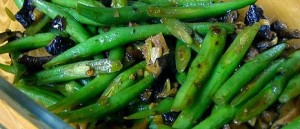While a suspect believed to be involved in a fatal shooting during a failed bid to take over the drug trade in a Manhattan McDonalds snorted drugs in a precinct interrogation room from a bag he pulled from his own butt on Saturday, the Brits are more creative.
 Max Daly of Vice reports that two weeks ago, early on Sunday morning, Scott walked out of a supermarket on the outskirts of Leicester with two joints of beef, 14 packs of chicken breasts and four beef steaks stuffed into his coat and trousers. Making it to the street, he walked round the corner to a local garage and sold the lot for £30.
Max Daly of Vice reports that two weeks ago, early on Sunday morning, Scott walked out of a supermarket on the outskirts of Leicester with two joints of beef, 14 packs of chicken breasts and four beef steaks stuffed into his coat and trousers. Making it to the street, he walked round the corner to a local garage and sold the lot for £30.
Scott used the cash to buy a couple of bags of heroin and a rock of crack, while the mechanics took some choice cuts take back to their families for Sunday dinner. Back in the supermarket, the shelves were restocked.
Scott managed to lift and sell all that meat without anyone noticing – well, until the shop’s sales and takings were tallied up at the end of the month – but many aren’t so fortunate; every couple of weeks there are reports of heroin users appearing in magistrates courts throughout the UK after being caught stealing meat.
Shoplifting is on the rise, and considering a slab of pork belly in your coat pocket is a little less conspicuous than, say, a boxed and tagged digital camera, it’s no surprise the most recent Global Retail Theft Barometer study identified meat as one of the most commonly stolen items from supermarkets. It’s got so bad, in fact, that some places have resorted to tagging and boxing their meat because it keeps on walking out the door.
“Back in the day it was electric toothbrushes and razors, but now meat is the go-to product to steal,” says Scott, a 42-year-old heroin and crack user who’s taking me on a walk through Leicester’s city centre supermarkets. “I need to do all my shoplifting before 10AM – before I start rattling – so on the average day I’ll get up at 7AM. Some shops don’t bother with security until 10AM because they think all the heroin addicts are lazy and still in bed.”
 Walking into a Sainsbury’s he quickly appraises the meat shelves, picking up a leg of lamb priced at £21. “This is what you want,” he says. “Stick this down your trousers, sell it down the pub and that’s a bag of heroin right there.” He puts it back on the shelf, although already we’ve got a security guard eyeing us up. “Legs of lamb are harder to get – popular with everyone, a joint of meat makes people feel good; they can bring it home to the family.” Next he scoops up 10 packs of high-end bacon: “This would just go down my coat. I’d tuck my body warmer into my belt so it doesn’t fall out.” He says he prefers the vacuum-packed bacon over the stuff sold in plastic trays because he can fit twice as many down under his coat.
Walking into a Sainsbury’s he quickly appraises the meat shelves, picking up a leg of lamb priced at £21. “This is what you want,” he says. “Stick this down your trousers, sell it down the pub and that’s a bag of heroin right there.” He puts it back on the shelf, although already we’ve got a security guard eyeing us up. “Legs of lamb are harder to get – popular with everyone, a joint of meat makes people feel good; they can bring it home to the family.” Next he scoops up 10 packs of high-end bacon: “This would just go down my coat. I’d tuck my body warmer into my belt so it doesn’t fall out.” He says he prefers the vacuum-packed bacon over the stuff sold in plastic trays because he can fit twice as many down under his coat.
“I have a few regular pubs I sell meat in; most of the pubs where I sell meat are estate pubs. In some of them the landlord will ask for first refusal before he lets me offer it to his customers. Sometimes I have to sneak in and sell it without the manager knowing.”
The selling of meat in pubs – these days mainly by heroin users – isn’t anything new, which is perhaps why it’s tolerated in many working class areas. One pub in London’s East End in the 1960s was known as “Dewhursts”, after the chain of butcher shops, because it sold so much meat that had been diverted from the docks.
 A stomach bug has many sailors at the 49er world championships off Buenos Aires battling bouts of vomiting and diarrhea.
A stomach bug has many sailors at the 49er world championships off Buenos Aires battling bouts of vomiting and diarrhea.











